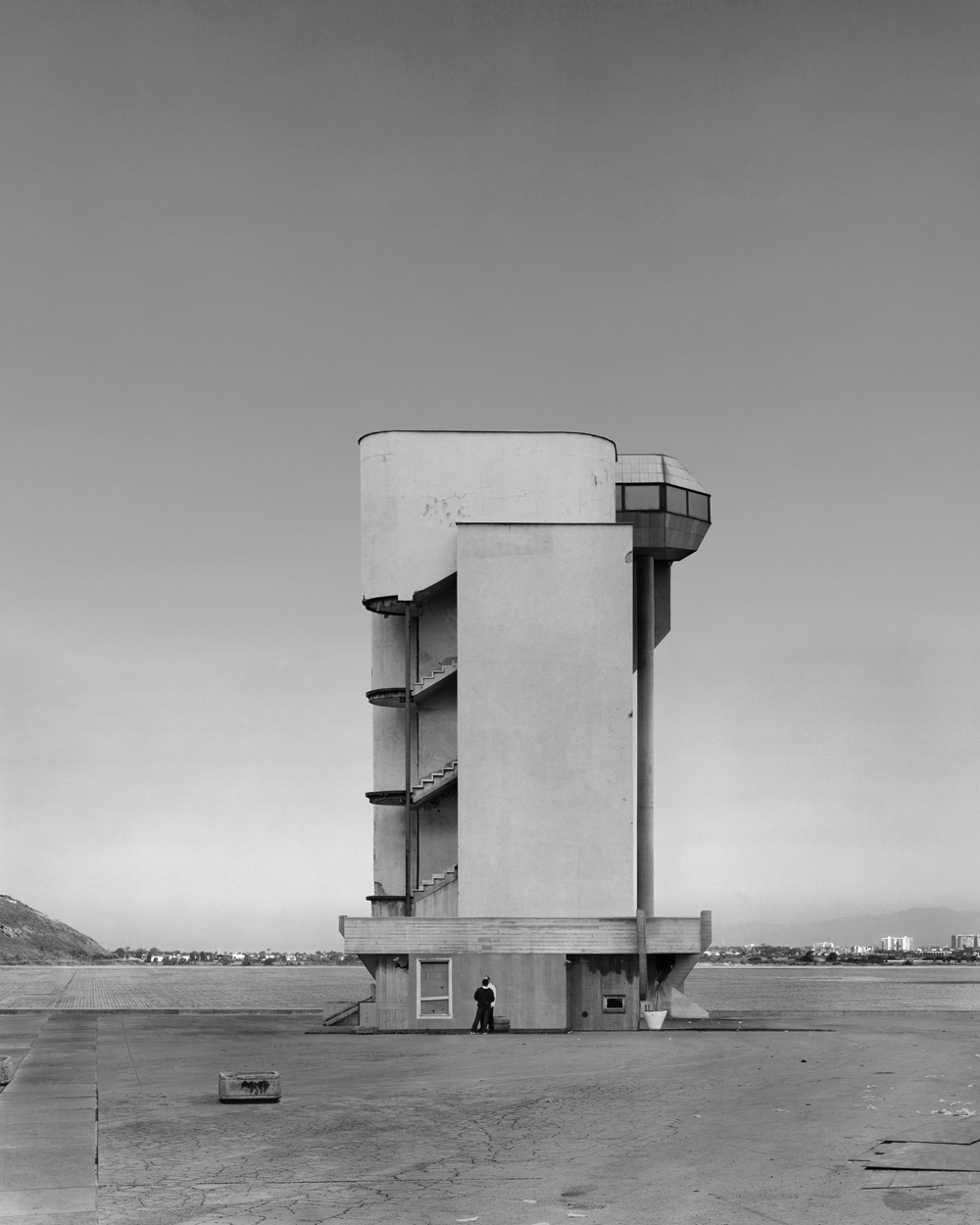Beate Gütschow
Haus am Waldsee, Berlin, Germany
Haus am Waldsee, Berlin, Germany

It could be an innocuous studio back-lot in Los Angeles or a devastated section of Baghdad. Looking at Beate Gütschow’s vast black and white cityscape, S #10 (2005), my eyes dart from what looks like an airport hangar in Burbank, California, to a motorway traversing a sprawling metropolis like Sao Paolo or Tehran. An expanse of dirt and concrete is sectioned off by a metal fence and peppered by chaparral, old pick up trucks, a dodgy white van, windblown rubbish and an overturned car. Groups of people congregate around piles of dug-up earth or incinerated vehicles. It’s a complicated and confusing mix of signs and symbols, to which my initial response is to try to pin down a specific location or event, to decode the deliberate clues Gütschow has left for me. But what should I interpret from them? Does she even know herself?
S #10 belongs to Gütschow’s most recent photographic series, begun in 2005, entitled ‘S’ (for Stadt, or City), on view in ‘ganz woanders’ (entirely elsewhere), a comprehensive selection of her two largest bodies of work to date. The images in ‘S’ are large black and white photographs of post-apocalyptic urban landscapes, which Gütschow assembles from her own archive of imagery taken around the world, performing a process she describes as ‘sketching on the computer’, to create near-seamless collages of imagined cities that seem trapped in the past or flung into the future. Eschewing the usual temporal and spatial constraints of traditional photography, each of Gütschow’s images is a composite that springs from virtually unlimited options for arrangement and manipulation. This technique became prominent in her early body of work, ‘LS’ (for Landschaft, or Landscape, 1999–2001), in which she employed hundreds of images taken from archives of clouds, hills and trees to create seemingly idyllic vistas dotted with suggestions of construction sites or environmental disasters. Similarly, the ‘S’ series is built of disparate concrete swaths, parking lots, trashed vehicles and abandoned stairwells she has photographed in locations around the world. One would think that such collages of iconography would result in even more extreme or jarring views than what could be framed in a single, un-manipulated photograph; yet the end results of Gütschow’s most recent efforts come off as unresolved, piecemeal constructions.
The problem may lie in Gütschow’s approach, which she discusses openly in interviews. Her decisions about the extent to which her source photographs should be manipulated seem to be made arbitrarily, and her editing of highly charged subject matter feels cavalier. Her source material for her figures, she admits, comes from ‘homeless people and tourists’ which she shoots from a distance with a zoom lens: ‘I leave them just as I find them, just as I leave the rubbish in the landscape.’ Her images of burnt-out vehicles (one of the few instances where Gütschow has specified to have used pre-existing images) are cut from pictures of a bombed Baghdad motorway during the first Gulf War, in which she Photoshopped out the burnt bodies. She has also made use of photographs she took in Sarajevo after the Bosnian War, but she decided to ‘erase the holes made by missiles in the walls’. Even though this kind of historical sampling and quoting characterizes Postmodernism, she chooses sources that are still too current and loaded to function merely as placeholders in a relatively apolitical montage.
Other works in the ‘S’ series are inspired less by war journalism than by archival images of modernist constructions and Utopian capitals such as Brasilia. In these images, Gütschow envisions a world in which humans are forced to function in the remains of the Brutalist buildings they dreamt up decades ago – a world paved over with and built up entirely from concrete, where parking lots merge with towering, windowless structures, amid an endless urban sprawl of satellite dishes, antenna and housing blocks. Details such as empty cars, evacuated plazas and rubbish adrift are incorporated to evoke a sense of abandonment – not only of urban spaces, but also of the ideals of modernism. S #2 (2005), for example, shows a group of people taking a cigarette break in a defunct corporate plaza underneath a looming concrete flyover. Images like these suggest projections of how our constructions will look when the patina of Modernism, and even the patina of ‘failed Modernism’, has worn off, and we have no choice but to inhabit what’s left. But the series lacks the eerily abandoned, constructed strangeness of Jeff Wall’s urban scenes, nor does it achieve the totalizing, skilfully rendered CGI universes in the futuristic cityscapes of Hollywood productions such as I, Robot (2004), or the Gotham City of Batman (1989). Instead, the ‘failure of Modernism’ comes off as a hackneyed artistic trope, and the images seem like unresolved studies or storyboards for something that could be more coherent or complete. Furthermore, by tweaking and Photoshopping images of homeless people and war-ravaged buildings as ingredients to populate her own constructed failed Utopias, Gütschow’s collages come across as unfortunate near-mockeries of the condition of actual war zones and devastated cities that photojournalists document every day.























